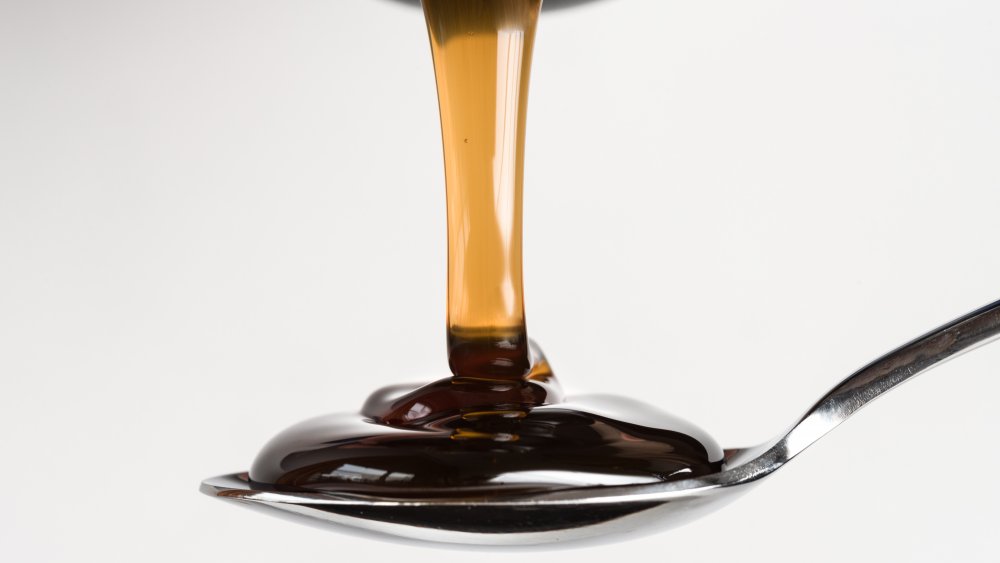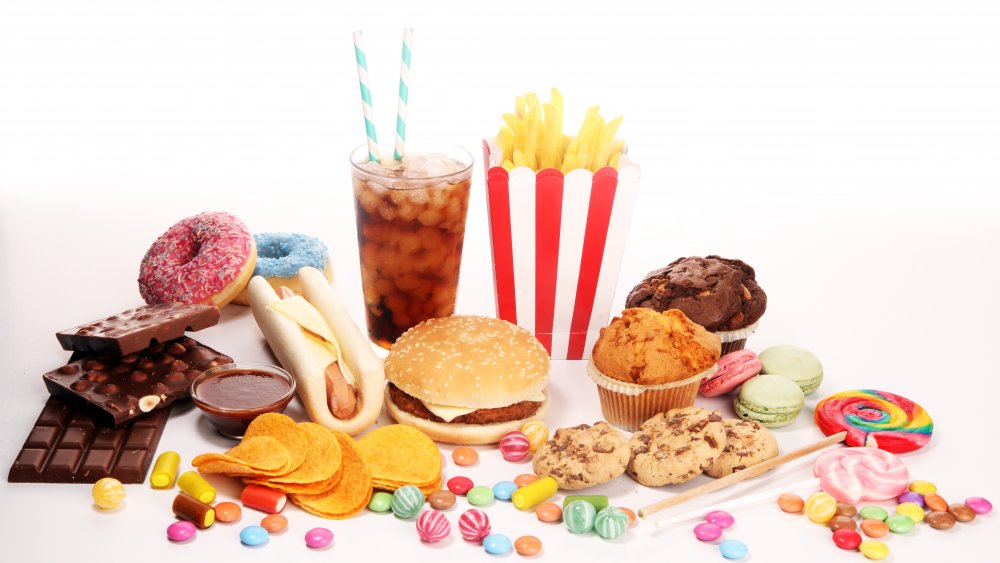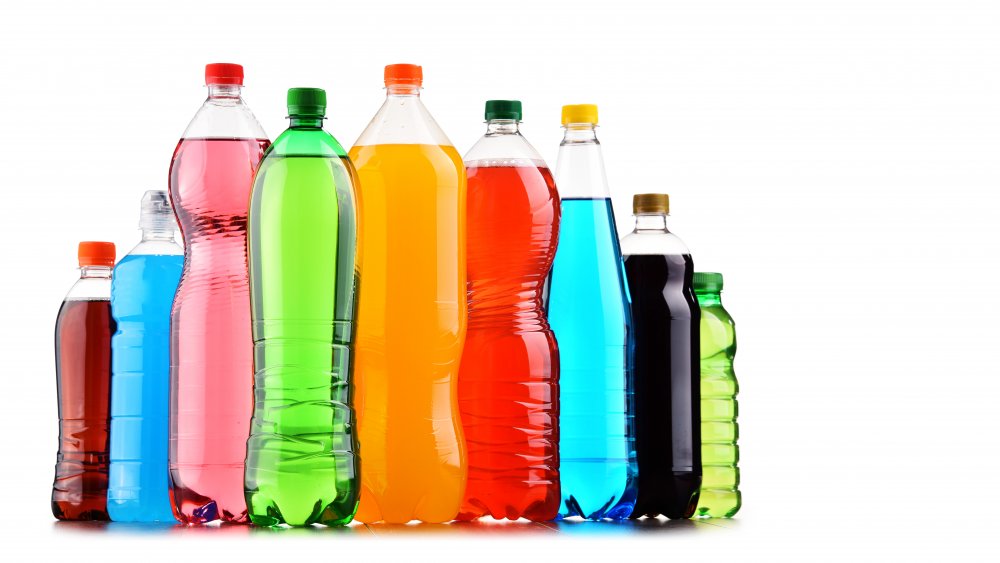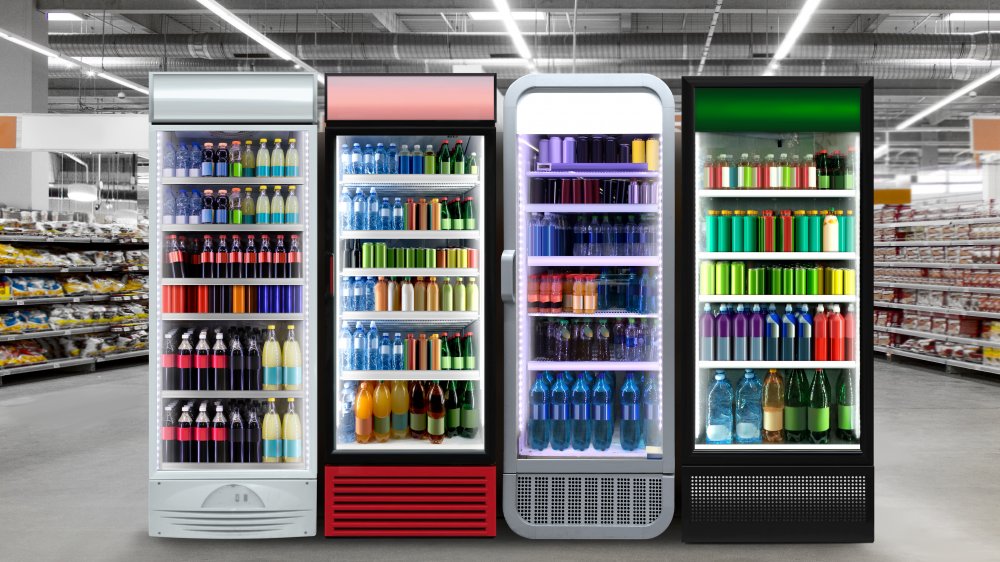The Untold Truth Of High Fructose Corn Syrup
Most people have heard about the health evils of high fructose corn syrup (HFCS) but don't have a lot of familiarity with the difference between HFCS and other types of sugar. There are many reasons that HFCS is bad for your health, and many reasons that it isn't the sole cause of obesity-related health problems. The issues around HFCS are what it is, how it is used, and how much is consumed, all of which are interrelated with the health problems facing the United States, including obesity.
What is high fructose corn syrup? Corn syrup, which is glucose, is treated with enzymes to convert it to fructose. The fructose is blended with pure corn syrup, resulting in a sweetener that is 45 percent glucose and 55 percent fructose. The process for making HFCS results in loosening the bond between the glucose and sucrose, which makes it more unstable, and, depending on who you ask, potentially more harmful (via Shape).
The breakdown of high fructose corn syrup
Regular cane sugar, or table sugar, known as sucrose, is made of 50 percent glucose and 50 percent fructose. The sugar molecules are bound tightly. Enzymes in the digestive tract break down sucrose into glucose and fructose, which then get absorbed into the body. Because the glucose and fructose in HFCS are not tightly bound, the digestive system has less work to do. This might sound good, but it means that they are absorbed into the bloodstream faster, leading the fructose straight to the liver, beginning a process called lipogenesis, which is the production of fats and cholesterol. This is why HFCS can result in higher instances of fatty liver disease (via Huff Post).
High fructose corn syrup has been used for a long time, so you may wonder why it suddenly started appearing everywhere as a product that is bad for your health. It started in 2004 when researchers at Louisiana State University and the University of North Carolina published a paper detailing a theory that HFCS could be a factor in the significant increase in obesity, frequently referred to as the obesity epidemic. Between 1970 and 1990, HFCS consumption in the United States increased by 1000 percent (via Lab Roots). Yes, 1000 percent. That is not a typo. The obesity epidemic happened at the same time, so the researchers examined the correlation between the two events to determine if there was any causation (via Consumer Reports).
The physical effects of HFCS
Another reason HFCS is singled out for increasing obesity levels is that fructose makes you hungry. There is a study from Johns Hopkins University that found fructose stimulates the appetite. Without reaching satiety, people tend to overeat. The problem is another study from the American Journal of Clinical Nutrition, which compared research on the effects of HFCS to the effects of table sugar, found no significant difference in the effects on the body. Both substances are bad for you, and the body responds similarly to both in regard to blood glucose, hunger, insulin response, and the hormone levels that control satiety and hunger. To be clear, the effects of both substances are negative and cause overeating and higher hormone levels.
There is concern that HFCS can make people ill. Again, the truth is somewhere in the middle. High fructose corn syrup has been connected to diseases such as diabetes and heart disease, but it's important to look at the whole story. The health problems result from the extremely high levels of fructose being consumed daily. Andrew Weil, the director of the University of Arizona Center for Integrative Medicine said: "Whereas glucose is metabolized in every cell in the body, fructose breaks down in the liver. Our bodies have a limited capacity to handle fructose in such high amounts and we're just now seeing the side effects."
How much HFCS do people consume?
When fructose breaks down in the liver, it lowers HDL, or good cholesterol, and raises LDL, or bad cholesterol. Too much fructose can also cause an increase in uric acid, which can cause kidney damage and gout. It can also prevent blood vessels from relaxing, resulting in high blood pressure. The added strain on the liver causes fat accumulation, and can lead to fatty liver disease, as well as type 2 diabetes (via Healthline).
An important aspect of the singling out of HFCS as the cause of obesity is the fact that it isn't HFCS per se, that is the problem, but the huge increase in the consumption of sugar as a whole. High fructose corn syrup just happens to make up a significant part of the sugar market because of government subsidies for corn that result in HFCS being extremely cheap for manufacturers to use as a sweetener, and because it is sweeter than other types of sugars, less needs to be used, saving manufacturers even more money.
The response in advertising
High fructose corn syrup also extends the shelf life of foods, and keeps things looking fresh, providing manufacturers yet another advantage.
The sheer volume of sweeteners is causing the problem, and HFCS happens to be the sweetener that is consumed in the highest amounts, making up approximately a third of consumed processed sugar in the United States. A study published in Global Public Health found type 2 diabetes is 20 percent higher in countries that consume a lot of processed foods (via Science Daily). The United States consumes 55 pounds of HFCS per person per year, putting it at the top of the list. This includes foods that may not ordinarily be thought of as "sweets," such as bread, yogurt, or ketchup (via Men's Health).
You most likely consume significantly more sugar than you realize, because manufacturers sneak it into everything. Foods you wouldn't think even have sugar actually have HFCS, such as tomato sauce or canned vegetables.
The difference in sugar consumption today
When HFCS began getting a lot of negative attention, the Corn Refiners Association tried to fight the bad publicity with their own ads, where they claimed HFCS doesn't have artificial flavors. This is an example of how HFCS as a product, and the industry behind it, are kind of shady. It is partially true that HFCS doesn't have artificial ingredients. However, it is processed using artificial ingredients such as glutaraldehyde, a synthetic agent, according to the U.S. Food and Drug Administration (FDA). Contact with the agent prevents a product from being called natural. However, if the agent is used in the production of HFCS, but doesn't actually come in direct contact with the cornstarch, then the resulting product can still claim to be "natural." As a result of this work around, some HFCS may legally be able to claim no artificial ingredients (via Consumer Reports).
Our ancestors consumed about 20 teaspoons of sugar per year, compared to now when that much is consumed per day. For comparison, a 20-ounce soft drink, such as soda or sports drinks, contains 17 teaspoons of sugar. That means one drink is equivalent to a years worth of sugar when comparing it to natural, unprocessed foods (via Huff Post).





